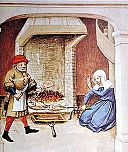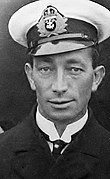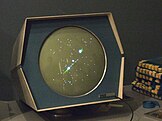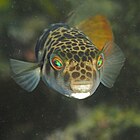| << | Today's featured articles for October 2023 | >> | ||||
|---|---|---|---|---|---|---|
| Su | Mo | Tu | We | Th | Fr | Sa |
| 1 | 2 | 3 | 4 | 5 | 6 | 7 |
| 8 | 9 | 10 | 11 | 12 | 13 | 14 |
| 15 | 16 | 17 | 18 | 19 | 20 | 21 |
| 22 | 23 | 24 | 25 | 26 | 27 | 28 |
| 29 | 30 | 31 | ||||
October 1

Medieval cuisine includes the foods, diets, and cooking methods of various European cultures from the 5th to the 15th century. Cereals were the most important staple during the Early Middle Ages: barley, oats, and rye were eaten by the poor while wheat was generally more expensive. These were consumed as bread, porridge, gruel, and pasta by people of all classes. Cheese, fruits, and vegetables were important supplements. Meat, including pork, chicken, and other domestic fowl, was more expensive, and game was common only on the nobility's tables. Many freshwater and saltwater fish were also eaten; in the north, cod and herring were mainstays. In contrast to the exotic spices and expensive imported food of the nobility, working-class food was less refined, as mandated by decrees and social norms. A highly spiced sweet-sour food repertory developed among the upper classes in the Late Middle Ages. (Full article...)
October 2
The Baljuna Covenant was an oath sworn in mid-1203 by Temüjin—the future Genghis Khan (depicted)—and the Baljunatu, a small group of companions. Temüjin, khan of the Mongols, had steadily risen in power through the late 12th century in the service of Toghrul, the khan of the Kereit tribe. However, Temüjin was betrayed by Toghrul in early 1203 and subsequently suffered a decisive defeat. He retreated to Baljuna, an unidentified body of water in south-eastern Mongolia, and amidst deprivations swore an oath of mutual fidelity with his companions. Not only did the Covenant promote Temüjin's ideals of social equality, but the oath-takers were themselves ethnically and culturally diverse—among their number were Tengrists like Temüjin, Christians, Muslims, and Buddhists. Three years later in 1206, Temüjin entitled himself Genghis Khan at a kurultai and honoured the Baljunatu with the highest distinctions of his new Mongol Empire. (Full article...)
October 3
The 1919–20 Gillingham Football Club season was their 22nd season in England's Southern League, and their 21st in the league's Division One. George Collins was appointed as Gillingham's new manager, and most of the players were new; the club struggled to find a settled team during the season, fielding nearly 40 players, including 6 goalkeepers. Gillingham finished in 22nd place out of 22 teams but nonetheless gained entry to the national Football League when it absorbed the entirety of the Southern League Division One. Gillingham also competed in the FA Cup, progressing from the sixth qualifying round before losing in the first round proper. The team played 47 competitive matches, winning 11, drawing 10, and losing 26. Arthur Wood (pictured) was the team's top goalscorer, with 12 goals in the league and 14 in total. Tom Leslie made the most appearances, playing 40 times. The highest attendance recorded that season at the club's home ground, Priestfield Road, was approximately 10,000. (Full article...)
October 4
WSNS-TV (channel 44) is a television station in Chicago broadcasting the Spanish-language Telemundo network. It is owned and operated by the network and shares its studios in the NBC Tower (pictured), and its transmitter on the Willis Tower, with WMAQ-TV. WSNS-TV was built as an English-language independent station by the local Essaness Theatres Corporation in 1970; it broadcast local sports, most notably the Chicago White Sox, among other local programs. In 1980, the station began broadcasting ON TV, a pay subscription television service with 120,000 local subscribers at its height in 1982; the station nearly had its broadcast license revoked by the Federal Communications Commission for its lack of local programming during this time. After ON TV folded in 1985, channel 44 became a full-time Spanish-language television station, including local newscasts. Telemundo bought WSNS in 1996; NBC bought Telemundo in 2002, leading to the merger of WMAQ-TV and WSNS-TV. (Full article...)
October 5
Prior to 1926, a successful ministerial by-election was required for members of the British House of Commons (pictured) to regain their seats after being made ministers. This requirement originated from 17th-century ideas of parliamentary independence from the Crown, which appoints the ministers; while early attempts were made to fully separate ministers and Parliament in a manner similar to that of the future United States, a compromise was reached instead to merely require new ministers to face a by-election to join Parliament. This by-election was in practice usually, but not always, an uncontested formality, and was gradually reformed before finally being abolished in 1926. Ministerial by-elections spread to British colonies in modern-day Canada and Australia, where they were likewise all abolished by the mid-20th century, ending with Western Australia in 1947; in Canada, they played a major role in the 1926 King–Byng affair before being abolished federally in 1931. (Full article...)
October 6
Mercy Point is an American science fiction medical drama that aired for seven episodes on UPN in 1998 and 1999. It was adapted from a film screenplay by Trey Callaway (pictured); production on the film project had ended due to the poor commercial performance of the 1997 film Starship Troopers. Starring Joe Morton, Maria del Mar, Alexandra Wilson, Brian McNamara, Salli Richardson, Jordan Lund, and Joe Spano, the series focuses on the doctors and nurses in a 23rd-century hospital space station. It was filmed in Vancouver, Canada. Storylines initially focused on ethical and medical cases, but later shifted to the characters' personal relationships, to better fit UPN's primarily teen demographic. The show suffered from low ratings, and has never been released on DVD or Blu-ray. Some commentators praised the show's characterization and use of science fiction elements, while others found it to be uninteresting and unoriginal. (Full article...)
October 7

Boukephala and Nikaia were two cities founded by Alexander the Great on either side of the Hydaspes river during his invasion of the Indian subcontinent. The cities, two of many founded by Alexander, were built shortly after his victory over the Indian king Porus at the Battle of the Hydaspes in early 326 BC. It is not certain which settlement had which name. Built on the site of the battlefield, the city on the eastern bank was most likely called Nikaia, while its western companion was probably named after Alexander's horse Bucephalus, who died during or after the battle. Their construction was supervised by Craterus, one of Alexander's leading generals. Boukephala seems to have had a more distinguished legacy than Nikaia: it was mentioned by Roman authors and appears on later manuscripts. The cities' precise locations are unknown, but it is considered likely that Boukephala was located in the vicinity of modern Jalalpur, Pakistan, and that Nikaia was across the river near present-day Mong. (Full article...)
October 8
The affine symmetric groups are a family of mathematical structures that describe the symmetries of the number line and the regular triangular tiling of the plane (pictured), as well as related higher-dimensional objects. They may also be defined as collections of permutations (rearrangements) of the integers that are periodic in a certain sense, or in purely algebraic terms as a group with certain generators and relations. They are studied in the fields of combinatorics and representation theory. Each of these groups is an infinite extension of a finite symmetric group, and many important combinatorial properties of the finite symmetric groups can be extended to the corresponding affine symmetric groups. The affine symmetric groups have close relationships with other mathematical objects, including juggling patterns and certain complex reflection groups. Many of their combinatorial and geometric properties extend to the broader family of affine Coxeter groups. (Full article...)
October 9
Airport Central railway station is an underground Transperth commuter rail station at terminals one and two of Perth Airport in Western Australia. The station is located on the Airport line and is one of three stations that were built as part of the Forrestfield–Airport Link project, which consists of 8 kilometres (5 mi) of twin bored tunnels and three stations. Construction began in May 2017 following preparatory work. By January 2018, excavation was complete, and in May 2018 the two tunnel boring machines reached the station after tunnelling from High Wycombe. The machines left the station tunnelling north-west in July, and construction of the rest of the station started. A 280-metre (920 ft) elevated walkway was built linking the station to the airport's terminal one. Originally planned to open in 2020, the line and station officially opened on 9 October 2022. The journey to Perth station takes eighteen minutes. (Full article...)
October 10
Terminator 2: Judgment Day is a 1991 American science fiction action film directed by James Cameron, who co-wrote the script with William Wisher. Starring Arnold Schwarzenegger, Linda Hamilton, Robert Patrick (pictured), and Edward Furlong, it is the sequel to The Terminator (1984). In the film, Skynet, a malevolent artificial intelligence, sends a Terminator android (Patrick) back in time to 1995 to kill the young John Connor (Furlong), the future leader of the human resistance. The resistance sends back a less-advanced Terminator (Schwarzenegger), reprogrammed to protect Connor. The film had an estimated $94–102 million budget, making it the most expensive film made up to that time. Industrial Light & Magic created a computer-generated main character, the first in a blockbuster film. Terminator 2 was the highest-grossing film of 1991 worldwide, at $520 million. Critics praised the visual effects, action sequences, and cast, especially Patrick. The film won Saturn, BAFTA, and Academy awards. (Full article...)
October 11
William Edward Sanders (1883–1917) was a New Zealand recipient of the Victoria Cross (VC), the highest British and Commonwealth combat award for gallantry. He took up a seafaring career in 1899 and earned a master's certificate in 1914, after the outbreak of World War I. He served on troopships until April 1916, when he was commissioned in the Royal Naval Reserve. He was appointed second in command of Helgoland, a Q-ship operating against German submarines. He was given his own command, HMS Prize, in February 1917. Sanders was awarded the VC for his actions while on his first patrol as captain, when Prize engaged and drove off a German U-boat that had attacked and damaged the ship. He was killed in action when Prize was sunk by a U-boat on her fourth patrol. His VC is currently held by the Auckland War Memorial Museum. His memorials include the Sanders Cup, a sailing trophy for 14-foot (4.3 m) yachts. (Full article...)
October 12

The Private Case is a collection of erotica and pornography held initially by the British Museum and then, from 1973, by the British Library. The collection began between 1836 and 1870 and grew from the receipt of books from legal deposit, and from requests made to the police following seizures of obscene material. Access to the material in the Private Case was restricted. At its height numbering some 4,000 items, the Private Case shrank as works were moved to the general collection, and grew with the arrival of bequests and donations from collectors. From 1964, reflecting the changing social mores of the time, the library began to review the Private Case, allowing public access to its contents, a process that was completed in 1983. There have been no new entries since 1990 and all new erotic and pornographic material is put on open access in the general collection. There is no restriction on access to Private Case material, except for some items which are in a fragile condition. (Full article...)
October 13

Raymond III (1140–1187) was the count of Tripoli (in modern-day Lebanon) from 1152 until his death. The son of Raymond II and Hodierna of Jerusalem, he was a minor when he succeeded his father. After reaching the age of majority in 1155, he fought the powerful Muslim ruler Nur ad-Din, and hired pirates to pillage Byzantine territories. From 1164, he spent nearly ten years in Muslim captivity. Marrying the wealthy heiress Eschiva of Bures made him prince of Galilee in the Kingdom of Jerusalem. A close relative of the royal family, he ruled Jerusalem as regent for Baldwin IV between 1174 and 1176, and for the child Baldwin V from 1185 to 1186. After the child king's death, he could not prevent the coronation of Baldwin V's mother Sibylla and her husband Guy of Lusignan. He paid homage to Guy only after Jerusalem was invaded by Saladin, the Muslim ruler of Egypt and Syria. One of the few crusader leaders who escaped from the battlefield at Hattin, he died soon after, probably of pleurisy. (Full article...)
October 14
The Tinder Fire was a wildfire that burned 16,309 acres (66.00 km2) of the Coconino National Forest in the U.S. state of Arizona during April and May 2018. The 2017 Arizona wildfires had been followed by drought, including a historically dry winter season. The Tinder Fire was detected from a lookout tower of the U.S. Forest Service on April 27, and firefighters began working to contain its spread within the day. Stoked by strong winds, low humidity, and high temperatures, the fire grew rapidly over late April, prompting the closure of Arizona State Route 87 and evacuation orders for 1,000 houses in Coconino County. These orders remained until May 4. Almost 700 firefighters were involved in combating the fire, which was fully contained on May 24. It destroyed 96 buildings, including 33 homes, and cost $7,500,000 to contain and suppress. An investigation determined that the Tinder Fire was caused by an illegal campfire. (Full article...)
October 15

Kyriakos Pittakis (1798–1863) was a Greek archaeologist. The first Greek to serve as the head of the country's archaeological service, he carried out the conservation and restoration of monuments on the Acropolis of Athens. Largely self-taught as an archaeologist, he was one of the few native Greeks active in the field during the late Ottoman period and the early years of the Kingdom of Greece, playing an influential role in the early years of the archaeological service. A founding member of the Archaeological Society of Athens, he was prolific both as an excavator and as a writer, publishing by his own estimation more than 4,000 inscriptions. He has been praised for his extensive efforts to uncover and protect Greece's classical heritage, particularly in Athens and the adjacent islands, but criticised for his unsystematic and incautious approach. His reconstructions of ancient monuments often prioritised aesthetics over fidelity to the original, and were largely reverted after his death. (Full article...)
October 16
Walt Disney (1901–1966) was an American animator, film producer and entrepreneur. A pioneer of the American animation industry, he holds the individual records for the most Academy Award wins (22) and nominations (59). On October 16, 1923, he founded the Disney Brothers Cartoon Studio with his brother Roy. He created the character Mickey Mouse and, as the studio grew, introduced synchronized sound, full-color three-strip Technicolor and technical developments in cameras. He expanded into feature-length cartoons, including Snow White and the Seven Dwarfs (1937), Pinocchio (1940), Fantasia (1940), Dumbo (1941) and Bambi (1942), and made live-action films like Mary Poppins (1964). He opened Disneyland in Anaheim, California, in 1955, and was working on another theme park, Disney World, in 1965. Disney was shy and self-deprecating in private but adopted a warm and outgoing public persona. He is widely acknowledged as a national cultural icon. (Full article...)
October 17
The planet Venus has been used as a setting in fiction since before the 19th century. Its impenetrable cloud cover gave writers free rein to speculate on conditions at Venus's surface, which was often depicted as warmer than Earth's but habitable. Images of a lush, verdant paradise, an oceanic planet, or fetid swampland, often inhabited by dinosaur-like beasts or other monsters, became common in early pulp science fiction, particularly from the 1930s to the 1950s. Some stories portrayed the surface as a desert, or invented more exotic settings. Venusians were often portrayed as gentle, ethereal, beautiful, and female, after the Roman goddess Venus. Since the discovery of Venus's harsh surface conditions, the planet has mostly been portrayed as a hostile, toxic inferno. Some stories have imagined the planet's colonization and terraforming, although the vision of a tropical Venus has occasionally been revisited in intentionally retro stories. (Full article...)
October 18
Growing Up Absurd is a 1960 book by Paul Goodman (pictured) on the relationship between American juvenile delinquency and the lack of societal opportunities to fulfill natural needs. It drew from his prior works, psychotherapy practice, and personal experiences and relationships. The book was rejected by nineteen publishers before Norman Podhoretz used selections from it to relaunch the magazine Commentary. Published in hardback by Random House in 1960, and in paperback by Vintage Books in 1962, the book became a bestseller with 100,000 copies sold in its first three years, and was widely read across 1960s college campuses and by student activists and the New Left. The book argues that young American men were justified in their disaffection because their society lacked the preconditions for growing up, such as meaningful work, honorable community, and sexual freedom. In later years, it was criticized for excluding women from its analysis. It was reissued in 2012 by New York Review Books. (Full article...)
October 19
Spacewar! is a space combat video game developed in 1962 by Steve Russell in collaboration with Martin Graetz, Wayne Wiitanen, Bob Saunders, Steve Piner, and others. The first video game known to be played at multiple computer installations, it was popular in the small American programming community in the 1960s. Players wage a dogfight between two spaceships with limited weaponry and fuel in the gravity well of a star. Spacewar! was written for the newly installed Digital Equipment PDP-1, a minicomputer, at the Massachusetts Institute of Technology, and the public domain code was widely ported. Saunders built an early gamepad controller for the game. It directly inspired many electronic games, such as the first commercial arcade video games, Galaxy Game and Computer Space (both 1971), and later games such as Asteroids (1979). In 2007, Spacewar! was named to a list of the ten most important video games of all time, which formed the start of the game canon at the Library of Congress. (Full article...)
October 20
Hurricane Willa was a powerful tropical cyclone that brought torrential rains and destructive winds to the Mexican states of Sinaloa and Nayarit in October 2018. It was the twenty-second named storm, thirteenth hurricane, and tenth major hurricane of the 2018 Pacific hurricane season, and tied a record as that season's third Category 5 hurricane. Willa originated from a tropical wave in the southwestern Caribbean Sea that crossed over Central America into the East Pacific without significant organization. On October 20 the system developed into a tropical depression, and strengthened later in the day into Tropical Storm Willa. It peaked as a Category 5 hurricane with sustained winds of 160 mph (260 km/h) two days later. On October 24, Willa made landfall in Sinaloa as a marginal Category 3 hurricane. It killed nine people, and caused more than Mex$16 billion (US$820 million) in damage. (This article is part of a featured topic: Category 5 Pacific hurricanes.)
October 21
"Made You Look" is a song by American singer-songwriter Meghan Trainor (pictured) from her fifth major-label studio album, Takin' It Back (2022). Trainor wrote the song with Sean Douglas and its producer, Federico Vindver. Epic Records released it as the album's second single on October 31, 2022. A doo-wop song, "Made You Look" was inspired by Trainor's body image insecurities and encourages listeners to embrace their natural beauty. Critics called it flirtatious and compared it to Trainor's past songs. Its dance challenge trended on TikTok. In the US, it peaked at number 11, becoming Trainor's first top-20 single since "Me Too" (2016). It reached the top 10 in Australia, Belgium, Canada, Ireland, New Zealand, Norway, Singapore, the UK, and Vietnam. Its colorful music video features cameos by social media influencers. Trainor performed the song on television shows such as Today and The Tonight Show. (This article is part of two featured topics: Takin' It Back and Meghan Trainor's Billboard Hot 100 entries.)
October 22
The Second Battle of Independence was fought on October 22, 1864, near Independence, Missouri, as part of Price's Missouri Expedition (map pictured) during the American Civil War. In late 1864, Major General Sterling Price led a Confederate force of cavalry into Missouri. Price was opposed by Union Army and state militia forces to his west led by Major General Samuel Ryan Curtis; Union cavalry under Major General Alfred Pleasonton caught up to the Confederates from the east as Price moved west along the Missouri River. On October 21, the Confederates occupied Independence. The next day, while part of Price's command broke through Curtis's line at the Big Blue River, Pleasonton attacked the Confederates at Independence, pushing them back through town, and after fresh troops arrived, towards the Big Blue River. By the end of the day, almost all of Price's men were west of the river. On October 23, the Confederates were defeated in the Battle of Westport, and Price's campaign ended in failure. (Full article...)
October 23
The English rock band the Kinks staged their first concert tour of the United States in June and July 1965, following concerts in Australia, New Zealand, Hong Kong and Singapore and a tour of the United Kingdom. Initially one of the most popular British Invasion groups, the Kinks (pictured) saw major commercial opportunity in the US, but the resultant tour was plagued with issues between the band, their management, local promoters and the American music unions. Promoters and union officials filed complaints over the Kinks' conduct, prompting the US musicians' union to withhold work permits from the band for the next four years, effectively banning them from performing in the US. Their American record sales declined, and bandleader Ray Davies shifted his songwriting approach towards more overt English influences. Davies resolved the ban in early 1969, and the Kinks staged a comeback tour later that year, but they did not achieve regular commercial success in the US again until the late 1970s. (Full article...)
October 24
South Asian river dolphins are toothed whales in the genus Platanista. They inhabit fresh water habitats in the northern Indian subcontinent. They were historically considered to be one species, but the Ganges river dolphin (pictured) and the Indus river dolphin were described as separate species in 2021, having diverged around 550,000 years ago. South Asian river dolphins are small but stocky cetaceans with long snouts or rostra, broad flippers, and small dorsal fins. Living in murky river waters and relying on echolocation for navigation, they have tiny, lensless eyes. The skull has large crests over the melon, which help direct their echolocation signals as they prey, mainly on fish and shrimp. They are active throughout the day in small groups. Both species are listed as endangered mammals by the IUCN Red List. Major threats include dams, barrages, fishing nets, and both chemical and acoustic pollution. (Full article...)
October 25
Howard Florey (1898–1968) was an Australian pharmacologist and pathologist who shared the Nobel Prize in Physiology or Medicine in 1945 with Ernst Chain and Alexander Fleming for his role in the development of the antibiotic penicillin. While Fleming received most of the credit for the drug's discovery, it was Florey and his team at the University of Oxford in England who developed techniques for growing, purifying and manufacturing it, tested it on animals and carried out the first clinical trials. Later trials in Britain, the United States and North Africa were highly successful. In addition to his work on penicillin, Florey studied other antibiotics, including lysozyme and the cephalosporins, and researched contraception. He was elected President of the Royal Society in 1960, became the provost of The Queen's College at Oxford in 1962, and served as the chancellor of the Australian National University from 1965 until his death. Florey's discoveries are estimated to have saved more than 80 million lives. (Full article...)
October 26
The 2022 Tour Championship was a professional snooker tournament that took place from 28 March to 3 April at Venue Cymru in Llandudno, Wales. Organised by the World Snooker Tour, it comprised the top eight players on the money list for ranking events held in the 2021–22 snooker season. It was the fourth edition of the Tour Championship, first held in 2019, and the fifteenth of sixteen ranking events of the 2021–22 snooker season, following the Gibraltar Open and preceding the World Championship. Broadcast by ITV4 in the United Kingdom, the event featured a prize fund of £370,000, of which the winner received £150,000. Neil Robertson (pictured) retained the title he won in 2021, coming from 4–9 behind in the final to defeat John Higgins 10–9. This was Robertson's 23rd win in ranking tournaments. Ronnie O'Sullivan became the first player to make five century breaks in two consecutive matches. (This article is part of a featured topic: Tour Championship (snooker).)
October 27
The Battle of Settepozzi was fought in 1263 off the Greek island of Spetses between a Genoese–Byzantine fleet and a Venetian fleet (Venetian galley pictured). Genoa had been engaged in the War of Saint Sabas against Venice since 1256, and had been allied with the Byzantines since the Treaty of Nymphaeum in 1261. In 1263, 48 Genoese ships, en route to the Byzantine stronghold of Monemvasia, encountered 32 Venetian ships. A Genoese chronicle states that only two of the four admirals of the Genoese fleet and 14 of its ships took part in the attack, and were easily routed by the Venetians, who captured four vessels, including both flagships, and inflicted considerable casualties. The Venetian victory, and the demonstration of Genoese reluctance to confront them, had important political repercussions, as the Byzantines began to distance themselves from their alliance with Genoa and restored their relations with Venice, signing a five-year non-aggression pact in 1268. (Full article...)
October 28
The smooth toadfish (Tetractenos glaber) is a species in the pufferfish family Tetraodontidae. It is native to shallow coastal and estuarine waters of southeastern Australia, where it is widespread and abundant. French naturalist Christophe-Paulin de La Poix de Fréminville described the species in 1813, though early records confused it with what is now the only other member of its genus, the common toadfish (T. hamiltoni). Up to 16 cm (6+1⁄4 in) long with distinctive leopard-like dark markings on its upperparts, the smooth toadfish has a flattened belly and an elongate body tapering to a slender tail. Its back and fins are rounded. Unlike most of its relatives, it does not have prominent spines on its body. Like other pufferfish, it can inflate itself with water or air. It forages for its preferred foods—molluscs and crustaceans—in sandy or muddy sediment. The smooth toadfish's flesh contains the poison tetrodotoxin, and eating it can be fatal. (Full article...)
October 29
The Solar System is the gravitationally bound system of the Sun and the objects that orbit it. There are eight planets, numerous dwarf planets, the asteroid belt between Mars and Jupiter, the Kuiper belt, and the scattered disc beyond Neptune's orbit. The Solar System was formed 4.6 billion years ago from the gravitational collapse of an interstellar molecular cloud, which formed the Sun and a protoplanetary disk that coalesced into other objects. Many celestial bodies have natural satellites orbiting them, and all giant planets and a few smaller bodies are encircled by planetary rings. Many small-body populations, including comets, centaurs, and interplanetary dust clouds, freely travel between the Solar System's regions. The solar wind, a stream of charged particles flowing outwards from the Sun, creates a heliosphere region. The Oort cloud may extend roughly a thousand times farther than the heliosphere. (This article is part of a featured topic: Solar System.)
October 30
Velociraptor is a genus of small dinosaurs that lived in Asia during the Late Cretaceous epoch. It was about 1.5 to 2.07 m (4.9 to 6.8 ft) long with a body mass around 14.1 to 19.7 kg (31 to 43 lb). Velociraptor was a bipedal carnivore with feathers, a long tail, and an enlarged sickle-shaped claw on each hindfoot; these claws are thought to have been used to tackle and restrain prey. It is distinguished from other dromaeosaurids by its long and low skull, with an upturned snout. One of the dinosaur genera most familiar to the general public (due to its prominent role in the Jurassic Park films), in actuality it was roughly the size of a turkey, considerably smaller than its depictions in novels and films. It is well known to paleontologists, with more than a dozen described fossil skeletons. One dramatic specimen preserves a Velociraptor locked in combat with a Protoceratops. (Full article...)
October 31

Five Nights at Freddy's is a 2014 survival horror game developed by Scott Cawthon. The player takes the role of Mike Schmidt, a night security guard at a family pizzeria. Schmidt must complete his shifts without being caught by the homicidal animatronic characters (Freddy Fazbear cosplayer pictured) that wander the restaurant at night. Cawthon conceived Five Nights at Freddy's based on criticism of Chipper & Sons Lumber Co., his previous game. Reviewers complained of its unintentionally frightening characters, inspiring Cawthon to create an intentionally scarier experience. Five Nights at Freddy's was first released for Windows on August 8, 2014. It received positive reviews, and became the subject of Let's Play videos on YouTube, gaining a large fan following. The game's success inspired its own media franchise, and its popularity led to thousands of imitations and fan games. A film adaptation by Blumhouse Productions was released in 2023. (Full article...)























